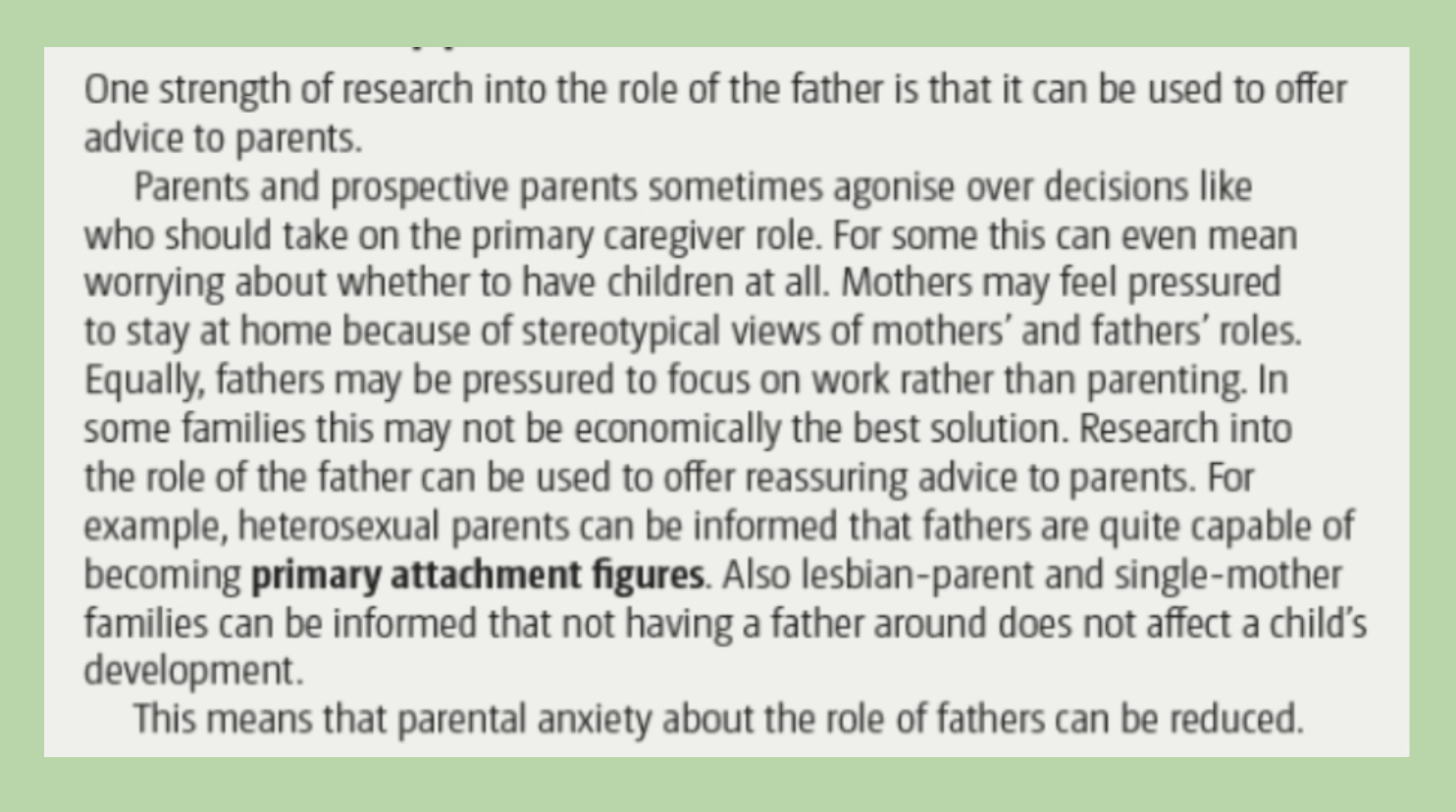Multiple attachments and the role of the father
1/9
There's no tags or description
Looks like no tags are added yet.
Name | Mastery | Learn | Test | Matching | Spaced |
|---|
No study sessions yet.
10 Terms
What did Schaffer and Emerson (1964) find?
the father was the primary attachment figure in only 3% of families
By 18 months of age, 75% of infants had formed an attachment to their father
Biological evidence for primary caregiver
Biological evidence suggests that men are less receptive and sensitive to the needs of an infant
Hormonal differences in men and women may contribute to the differences in nurturing behaviour from each caregiver
Biological women have more oestrogen than biological males
Oestrogen modifies neurotransmitters in the brain responsible for cognitive and emotional processes
This means that women may be more naturally emotionally sensitive than men (although this remains a 'prickly' issue, particularly in terms of debates surrounding gender)
What is the role of the father?
the quality of fathers’ play with infants is related to children’s attachments in adolescence
Fathers can act as primary caregivers and adopt behaviours seen in mothers
The key to attachment is the level of responsiveness, not the gender of the parent
What was Grossman’s (2002) study?
Grossman (2002) conducted a longitudinal study. Quality of attachment with the mother was linked to quality of attachments in adolescence. However, quality of fathers’ play with infants was related to quality of adolescent attachments.
What was Paquette’s (2004) study?
Paquette (2004) concluded that fathers encourage risk-taking behaviour and are catalysts for children exploring unfamiliar situations and taking chances.
What did Paqettes and Grossman’s studies suggest?
Fathers have a distinct role in attachment that is more to do with play and stimulation than nurturing/
Fathers adapting a more nurturing and sensitive behaviour
Some evidence suggests that when fathers take on the role of the primary attachment figure they adopt more nurturing and sensitive behaviour
Field (1978) filmed four-month-old babies interacting with:
primary caregivers who were mothers
primary caregivers who were fathers
secondary caregivers who were fathers
Field found that the primary caregiver fathers spent more time smiling, interacting with, and holding their babies compared to secondary caregiver fathers
shows that Fathers can be the more nurturing attachment figure. The key to attachment is the level of responsiveness, not gender of the parent
These behaviours are part of reciprocity and interactional synchrony
Evaluation: economic developments

Evaluation: inconsistency
Research into the role of the father is inconsistent. Some studies focus on fathers as primary caregivers, while others focus on them as secondary caregivers. This creates issues with reliability.
Evaluation: I/D
Research into the role of the father can be socially sensitive. The research suggests that children might be disadvantaged by certain child rearing practices e.g. if they do not have a father figure. MacCallum & Golombok (2004) found children in single-parent or same-sex parent families do not develop any differently to those in two-parent heterosexual families.